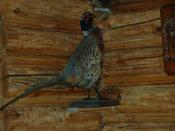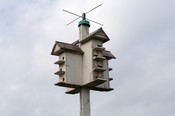Comparative Essay - A Bird in the House and A Jest of God One of the harsh realities of life is death. In A Bird in the House and A Jest of God, Margaret Laurence realizes the death of a loved one, the 'death of a dream', and the death of a relationship through the eyes of women. Laurence uses similar themes and ironic situations in both novels to paint a grim picture of life and death.
In both novels, the author writes of the struggles of women coping with the death of a loved one. Vanessa, a young girl in A Bird in the House, undergoes considerable pain throughout the entire book. She endures the death of an infant sister, all her grandparents, her father, and lastly, her dog. For Vanessa, leaving town eased the pain. Her way of dealing wth all the death and sadness was to move away and leave it all behind.
 Souci" width="175" height="131" />
Sophie Calle : "Rachel, Monique" > Souci
Souci" width="175" height="131" />
Sophie Calle : "Rachel, Monique" > SouciTwenty years later, Vanessa returns to her home town to bury her mother. "I had not been back in a long time, and I sensed that this would be my last sight of [Manawaka]." However, of her mother's death, Vanessa states, "Of all the deaths in the family, hers remained unhealed the longest." In A Jest of God, Rachel Cameron is a young schoolteacher who also experienced the death of a loved one, namely, her father. However, this is not Rachel's only exposure to death. Every day she sees the 'Grim Reaper' hovering over her ailing mother. Almost every waking moment she fears her mother's weak heart will fail and she will die. Rachel also suffers the death of a dream. She believes she is pregnant and when she finds out she is not, Rachel grieves the loss of what might have been - motherhood. However, Rachel finds solace in her fate - she becomes a mother to her mother. Like Vanessa, she too moves away from her home-town and starts a new life.
One tool that Laurence uses is irony. In A Bird in the House, the ignorant housekeeper, Noreen, remarked, "A bird in the house means a death in the house," when a sparrow flew in Vanessa's bedroom window. Although Vanessa had never believed in Noreen's doctrines, this one sent a shiver through her. Ironically enough, a death did occur in the family, not involving the oldest member, but her middle-aged father, who was by profession, a doctor. In A Jest of God, Rachel Cameron, is a lonely, single woman, who believes herself to be pregnant. After a great deal of grief, and thoughts of suicide, she comes to accept the fact that she is carrying a child, and looks forward to the event. Here, the irony lies in the fact that she is not carrying a child, but has a tumour in her uterus. In Rachel's words, "The ironies go on." Another similarity that exists between the two novels is the upsetting relationships the heroines endure. Vanessa of A Bird in the House finds a man that she can call her first real boyfriend, only to have her disapproving grandfather yell at her in his presence. "I'll bet a nickel to a doughnut hole he's married. That's the sort of fellow you've picked up, Vanessa." Vanessa would never think such a thing of the man that she had fallen for so quickly. It could not be. They had the same interests, and there was never a shortage of things for them to talk about. Yet, after that night, he never came back. Later, Vanessa found out that her grandfather had been right all along. Her first love was really a married man. Nearly the same thing happened in A Jest of God to Rachel. She met a man that she had known when she was a child, and had pursued an intimate relationship with him. He was easy for her to communicate with, and he was her first lover. When she finally gathered up enough courage to talk to him, and tell him what she felt should be done if she should become pregnant, "He pulls a picture from his wallet... a boy with face and eyes that speak entirely of Nick... Why is it that it never should have occurred to me, that he was married and had children?" Only later did Rachel find out that Nick was not married, and the picture was probably his deceased brother. He led her to believe he was married just to avoid involvement. After that incident, he, too, never comes back.
These two novels written by Margaret Laurence deal with the harsh realities of death and the hardships that the survivors must endure. Laurence's writing reveals a 'Life Sucks' attitude that is reflected through heartbreak and ironic situations. In the end, although both novels are basically grim in content, they leave you with a glimmer of hope that happiness can be found, if you're willing to make a change.



